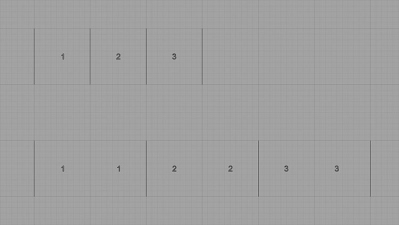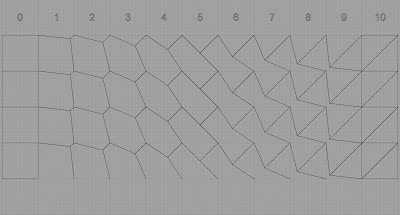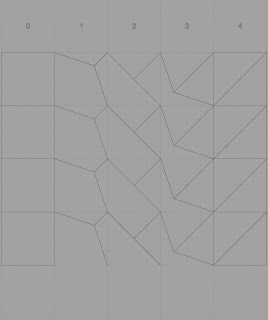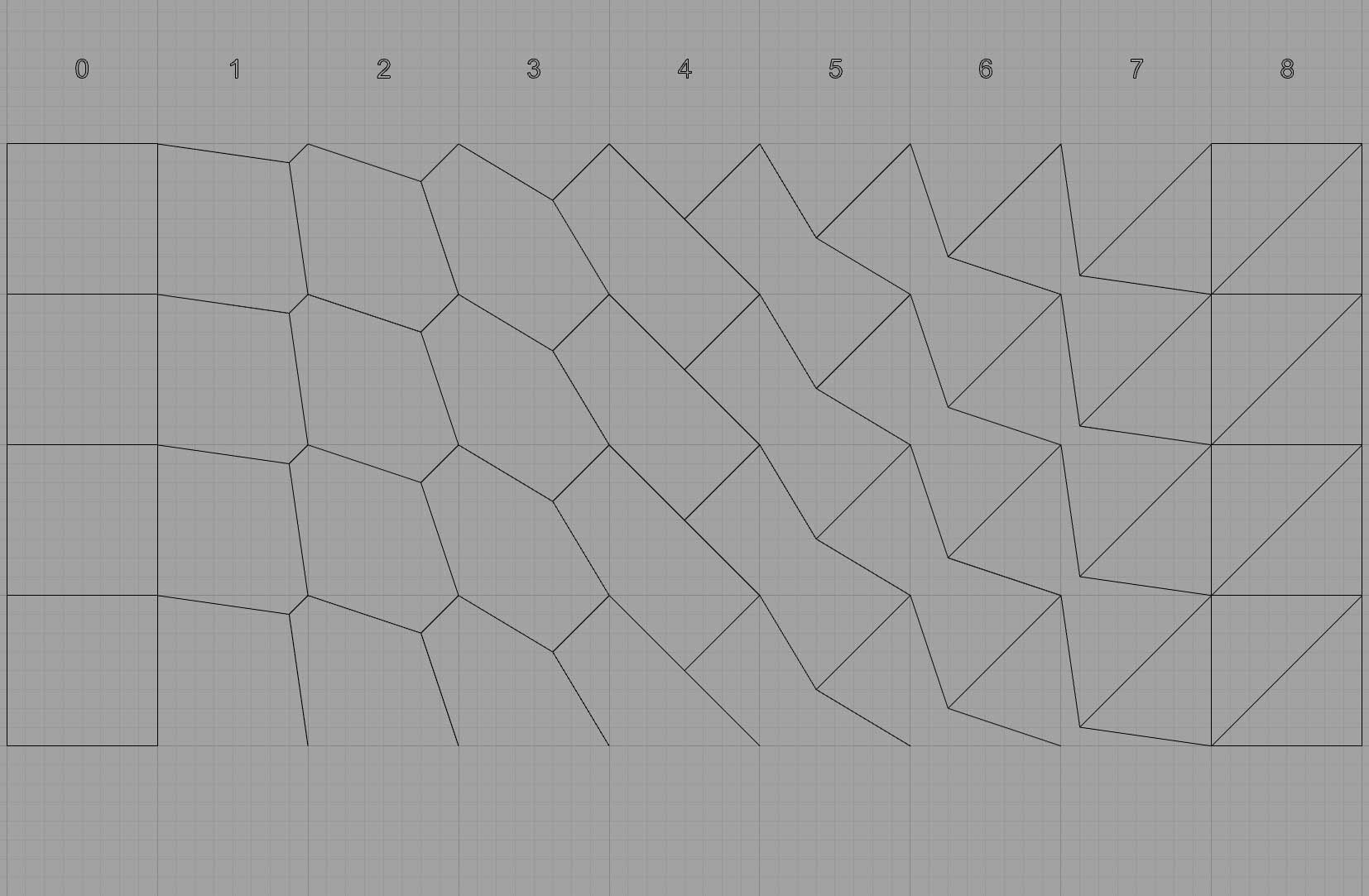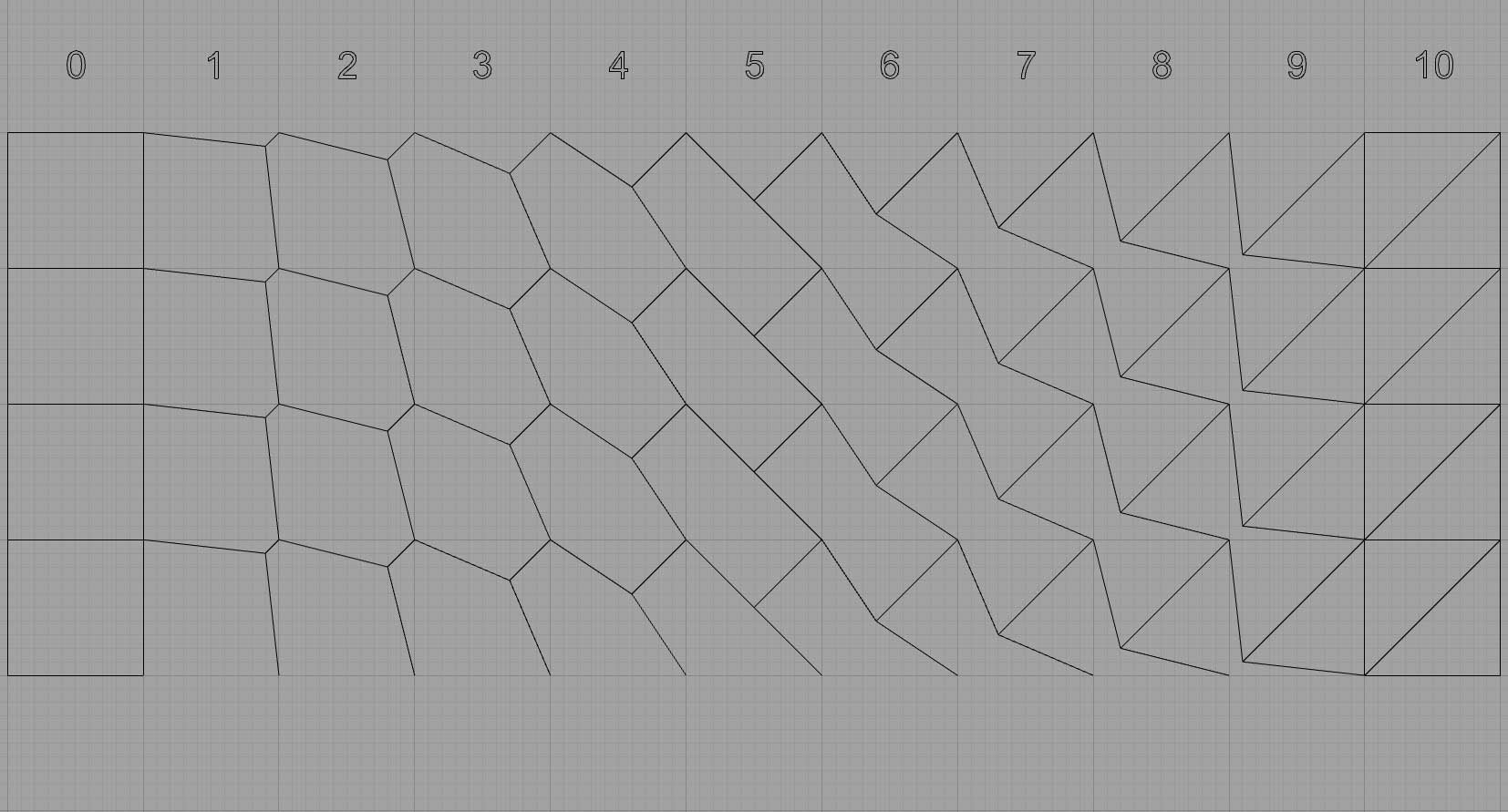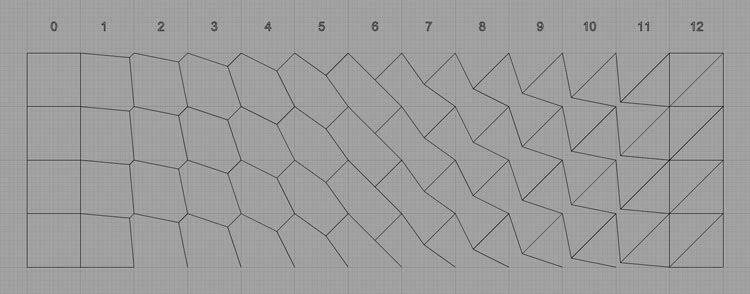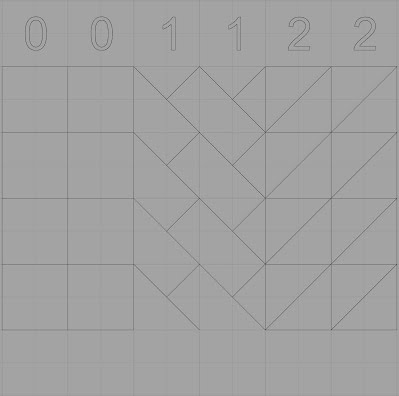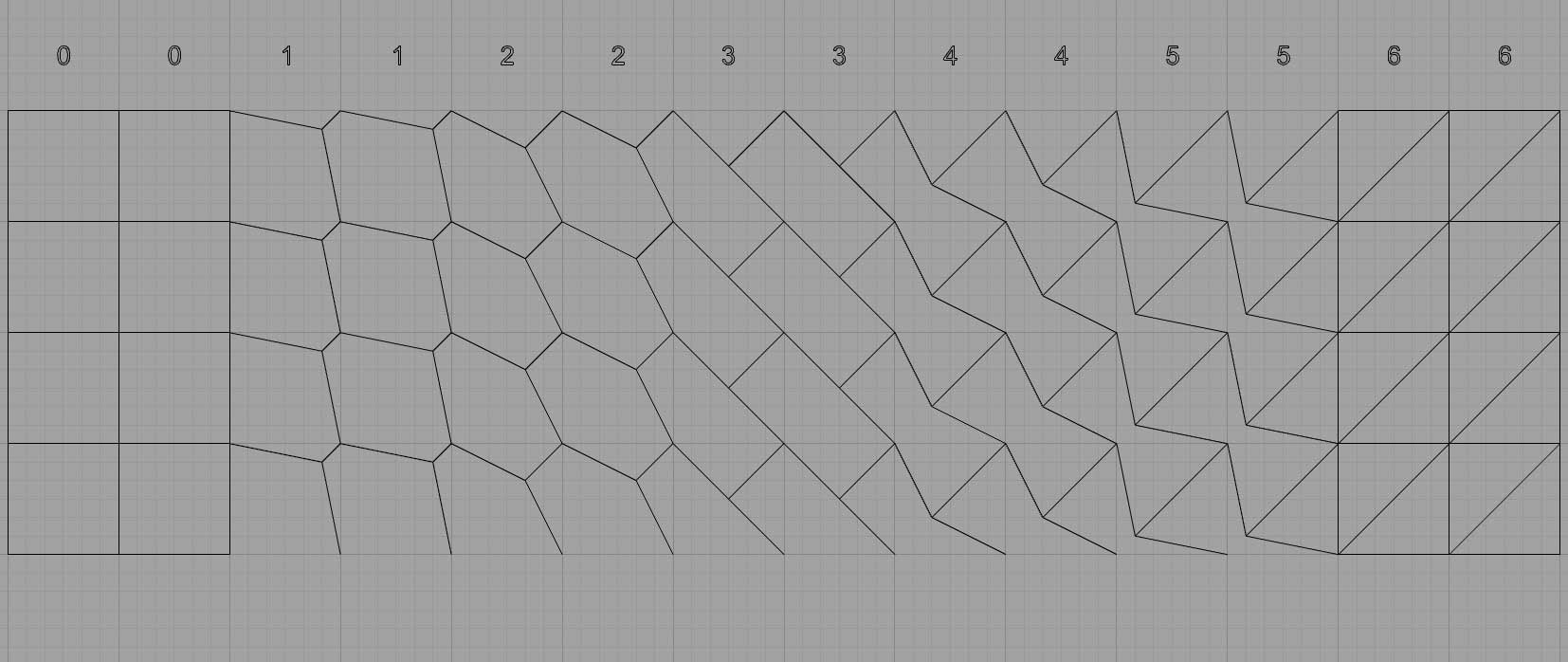UNDER CONSTRUCTION Beats and Tempo A core important aspect to consider of parquet deformation, borrowing from music terminology, is that of the beats of the bar and tempo, which are separate but related aspects. The beat refers to in effect stages, whilst tempo refers to the predetermined length, or number base. I discuss each in turn below. I begin with an abstract study of both aspects, to establish the premise, without a parquet deformation. This is then followed by application, with a parquet deformation. For demonstrative purposes, I use the same parquet deformation throughout for the sake of consistency, chosen for its aesthetics and ease of drawing. A slight drawback, in terms of the presentation only, are the computer-drawn diagrams. For various reasons, it is difficult to be consistent in clarity and scale with different successive software, from Rhino to Photoshop and then uploading to Google Sites. Strange things can happen along the way! However, this only affects the presentation; the argument remains unchanged. Ideally, once I have learnt more about Rhino, the presentation will be improved. (i) Beats to the Bar By beats to the bar (or stage), I mean the repetitive nature of the unit cell. 1-beat would be 1, 2, 3..., whilst 2-beats would be 1, 1; 2, 2; 3, 3... etc., Fig. 1. Of course, even more beats to the bar are possible, although in practice serve little purpose beyond bloating the composition. (ii) Tempo By tempo, I mean the length of the composition. The tempo can be of any length, although in practice it is generally favoured around a tempo of 10, for reasons as I detail below. Fig. 2 shows a tempo of 10 for both 1- (top) and 2- (bottom) beats. Application I now turn to matters of application, with examples based on the above, Fig. 3 and Fig. 4. There are obvious differences here, in two main ways: (i) the physical length of the composition, which doubles, and the condition of tiling, of which only 0, 0; 1, 1; 2, 2 possesses this feature. Observations Having thus determined the ideal beat, the question of the tempo now arises. But what is the ideal tempo? In short, this is to a degree subjective. As abstract concepts, this is neither too ‘quick’ nor too ‘slow’ but rather somewhere in between. A ‘quick’ example would be where the change is too drastic, of just a cycle of say, two or four stages (Figs. 12 and 13). This would result in a too abrupt a metamorphosis and would be jarring to the eye. On the other hand, a ‘slow’ instance, of say 20 stages (Fig. 18), where the change at each stage is not perceptible, would make for tedious viewing on grounds of excess length. A default tempo of 10 is judged just about ideal, neither too quick nor slow, although there is no firm single choice. Close tempos on either side of this, with 8 (Fig. 15) and 12 (Fig. 18), are still deemed permissible within an aesthetic range. However, beyond this point, with tempos of 6 (Fig. 14) and 14, these become a little too quick and slow respectively, and furthermore, with ever-declining (4 and 2), and increasing instances (16+) even more so, are thus deemed unacceptable. Therefore, the default beat is 2 (1, 1; 2, 2…) with a tempo of 10 (0-10). Below I show examples of the above discussion, where matters of the beats, and various tempos, are shown. Note that I show a curtailed range for reasons of expediency, where I show only even number instances. This is judged sufficient for assessment purposes. Each diagram is then briefly discussed. Further, since drawing large number tempos is relatively time consuming (and arguably is excessive), rather than show the entire range from 0-20, upon the drawing of 0-12, I then omit 0-14 to 0-18, with 0-20 chosen as the large number exemplar. Regarding transitions between the tiles, these should be perceptible, but not to an abrupt or imperceptible degree. Of course, perhaps some people may disagree with me here, especially so of the imperceptible degree types, as shown by 0-20 here. Undoubtedly, this is a smooth transition, and is not without merit. Indeed, I have seen implied tempos of 0-100 on others’ work. However, I consider that nonetheless the change between the tiles should be noticeable. 1-Beat (0, 1, 2...) - 7 Examples Fig. 6. 1-beat, tempo 0-4 (reduced in scale for convenience of viewing) Too quick, still with a jarring transition, and although better than 0-2, is still unacceptable. Fig. 7. 1-beat, tempo 0-6 (reduced in scale for convenience of viewing) Quick, in between a jarring and semi-acceptable transition, and although better than 0-4 is still with reservation. Fig. 8. 1-beat, tempo 0-8. Quickish, with an acceptable perceptible transition, where the transition is relatively smooth. Judged as usable for a defining work. Fig. 9. 1-beat, tempo 0-10 Perfectly balanced, neither too quick nor slow, with a perceptible smooth transition. Judged as ideal for a defining work. Fig. 10. 1-beat, tempo 0-12 Slowish, with an acceptable perceptible transition, where the transition is relatively smooth. Judged as usable for a defining work. Fig. 11. 1-beat, tempo 0-20 Far too slow, with imperceptible transitions, and is unacceptable on grounds of excess length. 2-Beat (0, 0; 1, 1, 2, 2...) - 7 Examples Fig. 12. 2-beat, tempo 0-2 Far too quick, with a jarring transition, and is unacceptable. Fig. 13. 2-beat, tempo 0-4 Too quick, still with a jarring transition, and although better than 0-2, is still unacceptable. Fig. 14. 2-beat, tempo 0-6 Quick, in between a jarring and semi-acceptable transition, and although better than 0-4 is still with reservation. Fig. 15. 2-beat, tempo 0-8 Quickish, with an acceptable perceptible transition, where the transition is relatively smooth. Judged as usable for a defining work. Fig. 17. 2-beat, tempo 0-12 Slowish, with an acceptable perceptible transition, where the transition is relatively smooth. Judged as usable for a defining work. Fig. 18. 2-beat, tempo 0-20 Far too slow, with imperceptible transitions, and is unacceptable on grounds of excess length (the divisions are to fine to show at this scale). Page Created 22 February 2021. Last updated 25 February 2021. |
Parquet Deformations >
